Once a power has achieved all its goals, it will strive to achieve absolute security,
a world order free from the consciousness of external danger,
where all problems would be solved as internal problems.
Kissinger
Written by Prof.Dr. Vladimir Prav exclusively for SouthFront
The current geopolitical goal of the United States is to cement its hegemony in the new world order of the XXI century, and to prevent the development of new centers of power capable of effectively competing with it on the world stage. In the economic sphere it aims to arrogate the most favorable competitive positions, with unimpeded access to markets and sources of raw materials. In the sphere of military security it wants a guaranteed level of national security.
To facilitate these goals, the U.S. military and political elite pursue a strategy of preventive defense, manifested in the preparation and conduct of hybrid wars. Preventive defense aims to block potential threats before they can turn into real threats to U.S. national interests. This is the essential difference between preventive defense and deterrence, which assumes a power equilibrium – the traditional principle of ensuring security in a multipolar system.
The main object of preventive defense (in hybrid warfare) is a potential threat from Russia, which retains a strategic nuclear potential sufficient for the hypothetical destruction of the United States. Such a situation is completely unacceptable for the United States, and all its forces are thrown into preventing the re-emergence of a direct strategic threat, which once came from the U.S.S.R.
The U.S. is moving toward this goal in several directions:
- Application of the “soft power” strategy, which focuses on the preparation and implementation of “Color Revolutions”. The minimum aim is to contain Russia within the framework of a controlled strategic partnership. The maximum aim is the disintegration of Russia into a dozen small states;
- Constant work aimed at changing the military-strategic balance by building up counterforce capabilities, to acquire the ability to deliver a preventive disarming strike against Russia (operational global strike).
The hybrid nature of modern wars and armed conflicts is manifested in the US National Security Strategy, as outlined in the US Army and NATO guiding documents. The term “War” itself is now practically not used in international relations, as it indicates a direct violation of the UN Charter (international law) and is associated with aggression, with armed struggle, and with negative illegal actions. For this reason, the term “war” was replaced by the terms “armed conflict” and “international armed conflict”. Thus, the term “hybrid war” is not considered to directly violate the provisions of the UN Charter (“war disappeared behind the word ”hybrid”).
The U.S. Army ADP 3-0 Manual (2010) describes “hybrid warfare” as a set of pre-prepared rapid-response instruments of traditional warfare in combination with irregular tactics, accompanied by measures of influence in political, economic, informational, psychological, humanitarian, religious, ethno-confessional, sports, and cultural spheres of activity in order to achieve strategic goals.
Russian military theorist Evgeny Messner can be considered the forefather of the concept of modern hybrid warfare. In 1960, he described the idea and essence of this concept:
“In previous wars the conquest of territory was considered important. Henceforth, the most important thing will be the conquest of souls in the warring state. Wars will be fought not on a two-dimensional surface, as in the past, not in three-dimensional space, as was the case in the days of the birth of military aviation, but in four dimensions, where the psyche of the warring peoples is the fourth dimension…”; “The use of insurgents, saboteurs, terrorists, propagandists will take on enormous proportions in the future…”.
The modern concept of hybrid warfare was formulated in the article by American specialists D. Mattis and F. Hoffman “Future Warfare: The Rise of Hybrid Wars”:
“Hybrid wars incorporate a range of different modes of warfare including conventional capabilities, irregular tactics and formations, terrorist acts including indiscriminate violence and coercion, and criminal disorder”.
The annual London publication of the International Institute for Strategic Studies, Military Balance (2015), interprets “hybrid warfare” as “the use of military and non-military tools in an integrated campaign designed to achieve surprise, seize the initiative and gain psychological as well as physical advantages utilizing diplomatic means; sophisticated and rapid information, electronic and cyber operations; covert and occasionally overt military and intelligence action; and economic pressure.”
When considering hybrid warfare through the prism of geopolitical confrontation between states, it turns out that today the main efforts of rivalry between states, in addition to the traditional ones related to land and water spaces, are transferred to air and outer space, to the global military, information, economic, financial, energy, resource and cultural space. Moreover, these spaces, to a greater or lesser extent, intersect and interact with each other, forming a global geopolitical space, the space of human activity, existence and struggle.
It should be noted that when interstate relations become more acute, geopolitical confrontation is transformed into a struggle, which involves a complex destructive impact on the opposing party with its own simultaneous defense against such an impact. The geopolitical struggle (rivalry) uses all the power of the state (including military power). The ultimate goal of geopolitical struggle (confrontation) is the conquest and retention of absolute superiority over the opposing party.
Within the framework of modern geopolitical struggle in international relations it is advisable to use the following definition of hybrid warfare (high level of generalization). Hybrid war is a geopolitical struggle (confrontation) of states in the system of interconnected spaces, in which geopolitical subjects form their policies and conduct practical activities for the development (capture) of spaces and control over them in order to ensure their national interests, or search for an optimal place in them, when active actions are impossible or inexpedient. Hybrid war is the most acute phase of geopolitical confrontation in modern conditions, which necessarily involves indirect and direct military violence.
The basic principles of hybrid warfare include:
- The existence of a single command centre that plans, organizes, and controls the conduct of hybrid warfare;
- Management of forces and means (hierarchically or horizontally organized) that operate according to developed plans within the framework of a single hybrid warfare strategy;
- Application of various forms, methods, forces and means used in hybrid warfare in a unified geopolitical space;
- The single geopolitical space includes “zones of armed violence” and “zones of struggle without direct military violence”, in which a complex impact on the target country is conducted.
Hybrid wars have the following distinctive features, which are usually manifested in a complex:
- the political content of hybrid warfare, which determines the main strategic objectives pursued by the aggressor country and the target country;
- form of hybrid warfare (e.g., armed conflict, network operations; civil war; color revolutions, information warfare, economic warfare, financial warfare, confrontation in the social sphere);
- military-technical attributes (use of conventional weapons, new physical principles weapons (NPPW) and weapons of mass destruction (WMD), use of forces and means of information confrontation, dual-use civilian resource);
- scale of hybrid warfare (global geopolitical or regional level);
- duration of hybrid warfare (permanent or discrete nature);
- the composition of participants in hybrid warfare (aggressor and target countries).
As a result of successful hybrid warfare, the aggressor country achieves, in particular, increased influence on certain spheres of international relations; control over the sources of strategic resources; obtaining an advantage necessary for further development; reducing the level of security and pace of development of other states to ensure dominance in the world community.
In the “zone of armed violence” of hybrid warfare, direct application of military violence is possible, which uses regular armed forces, irregular military formations, special services; sabotage, information, financial and economic operations, information and psychological impact on people’s behavior. In the “zone of struggle without direct military violence”, there is no armed conflict (including on the territory of other countries), but large-scale subversive operations are conducted in the political, military, financial, economic and social spheres of the target countries.
In hybrid wars, an active role is played by the internal political forces of the victim country, which share the position of the aggressor country and have material and informational support. The goal is to change the regime of the victim country or radically change its domestic and foreign policy in the interests of the aggressor country.
The essential feature of hybrid warfare is that it is waged both in peacetime and wartime (there are practically no boundaries between the state of war and peace). This leads to the fact that the pure concept of hybrid warfare lies outside the scope of modern international law. If there is a hybrid war between states, there is virtually no chance of establishing international responsibility for this type of activity, because from the point of view of modern international law such interference is difficult to identify and prove. In other words, the aggressor in hybrid warfare is not always clearly visible, especially from the perspective of international public opinion and international law.
Hybrid wars include traditional wars and international armed conflicts, which can be considered as components of hybrid wars. Hybrid wars do not cancel the essence, causes, and objectives of traditional wars. The essence of wars and the newest armed conflicts, as before, remains the struggle for territories, natural resources, world markets, dominance in the international arena and the possibility of solving interstate contradictions. Wars and international military conflicts are unleashed by the political elites of states, while the war and international military conflict itself remain a continuation of their domestic and foreign policy. The state remains their subject.
At present, the presence of powerful armed forces and strategic nuclear deterrent forces is not enough to ensure the sovereignty and territorial integrity of the state. That is why the so-called network wars are being waged within the framework of hybrid warfare. They are conducted mainly in the information sphere in order to influence the processes of the target country to achieve specific goals of the aggressor country. For network warfare there are no state borders, no barriers and no zones of influence of national administrations.
American experts believe that the purpose of a “network” is to build a system of global domination of the United States over the entire world, that is, a kind of modern analog of colonization and subjugation in new forms and by new means. Here direct occupation, mass introduction of troops or seizure of territories are not necessary. Army actions and huge military expenditures are unnecessary. The network is a more flexible weapon, it manipulates military force only in extreme cases.
The introduction of the “network” deprives countries, armies and governments of independence, sovereignty and subjectivity, turning them into rigidly controlled objects. First of all, it achieves a firm attachment of the entire set of resources of the target country to the geopolitical aggressor, and the “transfer” of these resources to the aggressor is carried out to a large extent voluntarily and willingly, since it is perceived not as aggression, but as an additional incentive for upward development.
One of the network operations of hybrid warfare is the “Color Revolution,” which aims to dislodge the existing political regimes in a country. Its idea is to gain full control over the state and its territory, if possible, without the use of armed violence.
“Color revolution” is a process of preparation and change of the ruling regime of the state through non-violent demonstrations of citizens with the support and in the interests of the opposition homegrown elites, as well as the aggressor country. “Color revolution” creates an illusion of legitimacy of decisions and actions taken under the pressure of crowds, and also masks the forceful illegal activities of foreign residents and betrayal of the national interests of the state by elitist groups. It has a ” non-manifest” character and cannot be perceived by the whole society as a direct threat to its existence.
Within the framework of Color Revolutions, the informational-psychological impact on the psyche of social groups, military personnel and decision-makers in a country is the subordination and suppression of cognitive processes. To date, the main targets of Anglo-Saxon civilization within the framework of information-psychological suppression in Russia are:
- the hierarchical relationship,
- the Russian Orthodox Church,
- the foreign and domestic policy of the country’s leadership,
- conceptions of Russian history,
- language and art,
- and the mentality and cultural norms of the Russian people.
In building its international policy in the 21st century, Russia needs a clear understanding that its status as a major nuclear power with the potential to inflict unacceptable damage on the United States is incompatible with American perceptions of its own security. In the foreseeable future, there will be a systemic threat from the United States to level Russian nuclear capabilities and finally break the strategic stability based on vulnerability parity. This defines the basis and motives of the American policy: “Russia and its nuclear capabilities must be destroyed.”
The Russian military and political leadership demonstrates a high degree of attention to the problem of maintaining high-level strategic stability – one of the most essential guarantees of lasting peace and Russia’s independence in conducting domestic and foreign policy. There is a rejection of the dubious “strategic partnership” in international security issues and a transition to an open recognition of the destabilizing role of the United States in international relations.
The U.S. is no longer satisfied with the existing model of deterrence and strategic stability, which is based on the principle of mutually assured destruction and deprives each side of the motivation to launch the first strike. Its desired new system should provide the US with a monopoly on the use of force. In other words, the U.S. seeks to create a system of international security in which it can practice the principle of deterrence by eradication of threats to its interests. Through high-precision weapons, the United States has developed a powerful counterforce capability, which may well provide the ability to be the first to suppress the nuclear forces of all states, and through the missile defense system to prevent a significantly weakened (due to the impact of high-precision weapons) retaliatory nuclear strike by any adversary.
The pursuit of absolute security is the main factor driving the American philosophy of security. However, the multipolar world, the development of science and modern technology indicate that the notion of absolute national security today is nothing more than a myth; today total security and total defense are unattainable.




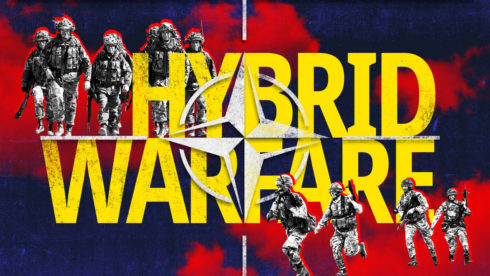
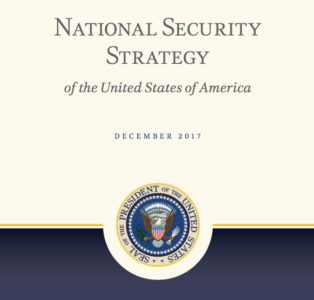
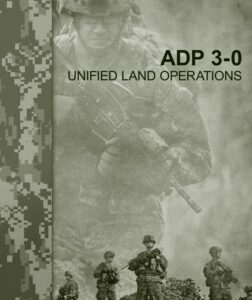
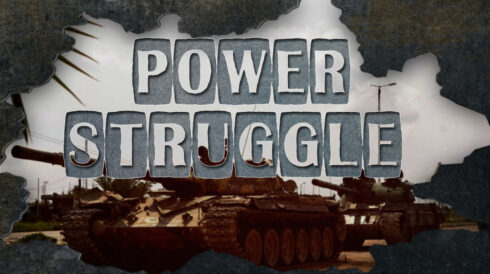


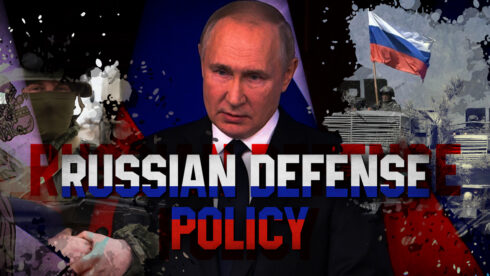
‘today total security and total defense are unattainable.’
nor have they been attainable throughout history. ‘hybrid warfare’ is a re-branding of the cultural (ie language), religious and economic coercion, aka ‘soft power’, that all imperial powers feel the need to inflict on their victims.
yet all empires at heart know that the further they push, the longer and more vulnerable all their boundaries become whether geographical, cultural, economic or even ‘virtual’.
forever war along exponentially increasing boundaries is expensive, besides a failed ‘conquered’ state has reduced value (as a resentful subjugated people are annoyingly unproductive).
stolen resources (land, agriculture, minerals etc) become worthless to the oppressor without a stable regime that can maximise their value, and once that bubble bursts (rome or even u-s in afghnstn) even the empire’s ‘superior’ weapons become worthless too, as the odds shift in favour of the oppressed.
murika, is still dangerous but fatally wounded. other states realise this; with those outside u-s-anglo-kultur best able to resist the corporate soft power underpinning pax-murika since 1945.
if chn and rus see the beast is struggling then collapse could be swift, the only questions being 1. how much damage murika will inflict as it falls? and 2. will rus and chn attempt to assist the beast? both fearing the vacuum left behind could be worse than the beast itself.
that would be ironic.
the united states today is incapable of cope, let alone winning a hybrid war against brics+/sco/eaeu.
we are all hybrid mulattos
finally i read something useful. most of the times westerners cannot see (or don’t wanted to see their own tail). usa empire and their second tier powers comes from the same background, their top elites comes from the same breed, used eugenesis to mix races and designated a system when they only delegates power on a lower level, never on the same lever. hybrid warfare is useful because it uses several domains but to attack one domain objective.
if you wanted to fully understand western world you must understand schopenhauer and their student friedrich nietzsche, and if you wanted to go one level below on time , you must fully understand the middle age robert fludd and the book of hermes. western world is so badly developed but they did it with the purpose of the empire, western world is about to build one universal empire to rule over all. neocons won’t stop until everyone is slaved and put all the wisdom of the world inside a cage.
ussa is broke, the iou fiat filth ex saudi mercan toilet paper dollah is getting flushed and when the s#it pipe ruptures down in the wall st sewer expect a tsunami of toxic derivative fecal matter to wash over the entire $lumville abomination. whatever happens to don chump on the stump, bullet or not, the ensuing civil war reloaded will tear the khazar owned idiot golem to shreds. it’s all over with natostan as the rump ukrapper dumpster fire sputters out
don’t be so naive, the empire is far from finished, they are mutating, they are performing a live transmutation and adapting to the new age they planned and developed 50 years ago. the flashing point wars at the borders of the usa empire are helping to an inner transformation. the head of the empire are exceptionals, i like to call them the “masters of the universe”, because they think they created everything and has to rule over everything.
hybrid mulattos preferred by all germ females